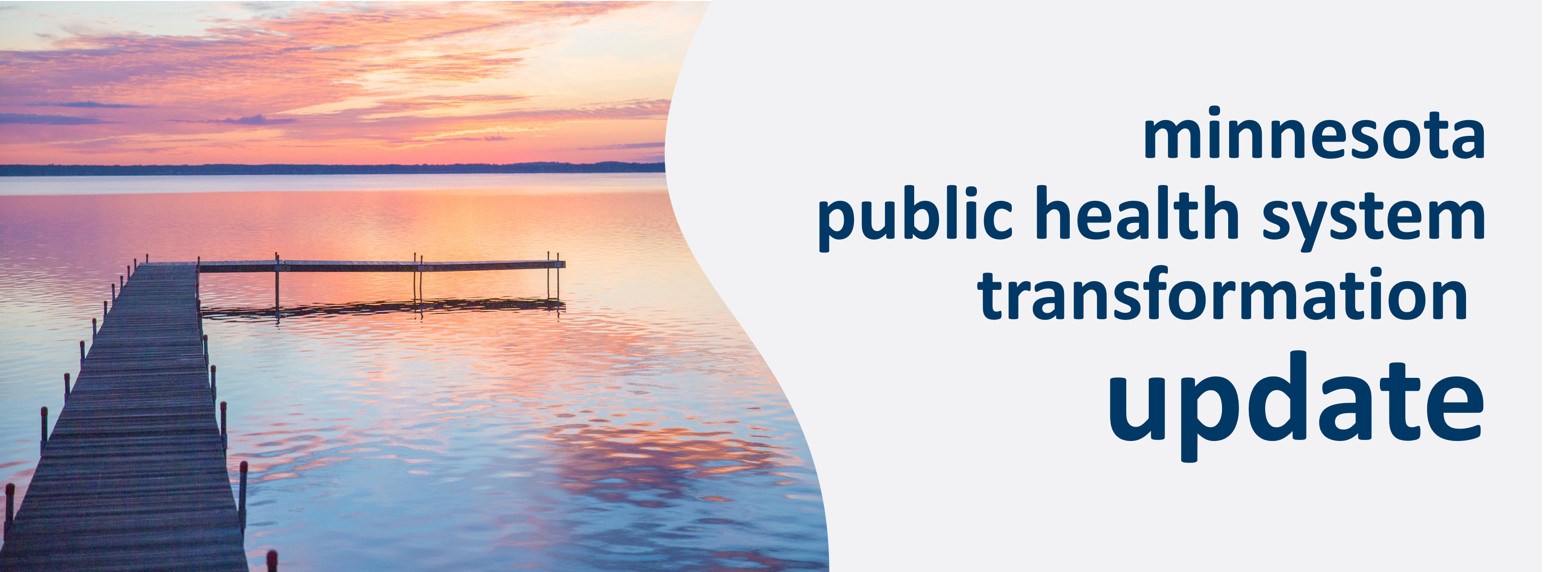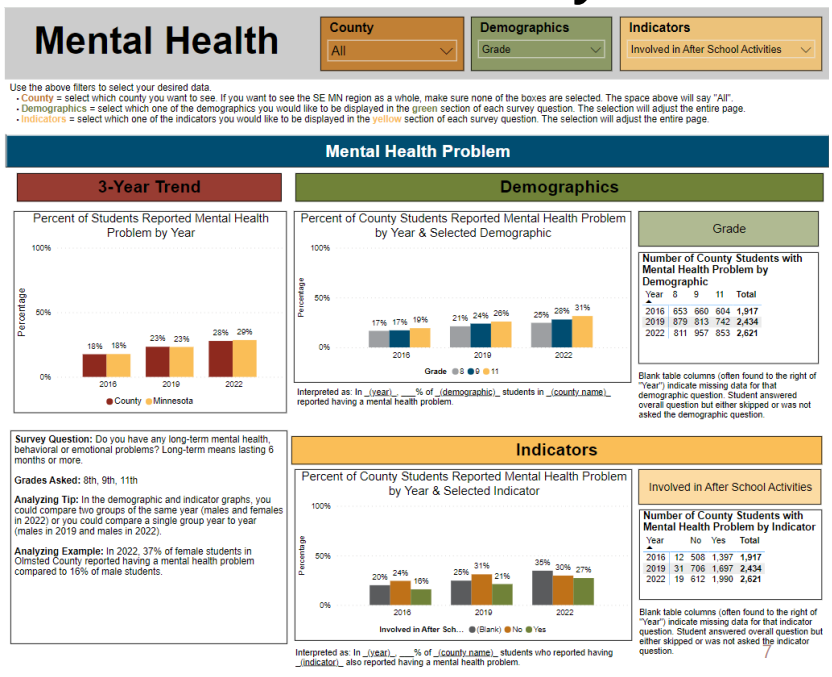Transforming Minnesota's Public Health System
- Home: System Transformation
- Framework of Foundational Responsibilities
- Joint Leadership Team
- Minn. Infrastructure Fund and Local Innovation Projects
- Governance Groups and Communities of Practice
- Data Modernization
- Regional Data Models
- Tribal Public Health Capacity and Infrastructure
- FPHR Grant: Funding for Foundational Responsibilities
- Reports, Fact Sheets, Resources
- Newsletter
- Message Toolkit
Related Sites
Contact Info

Public Health System Transformation Update Newsletter
July 2024 | View all system transformation newsletters
Southeastern Minnesota: A region shares data, expertise, and partnership
Minnesota’s larger counties often have more staff and greater capacity to collect, analyze, and share population health data, but our access to accurate, reliable, and timely data shouldn’t depend on where we live. Smaller counties need good data, too, but can’t support a full or even partial data expert to do this important work.
Olmsted County Public Health, in partnership with neighboring jurisdictions in southeast Minnesota, is exploring whether larger health departments can support their smaller regional neighbors in population data, epidemiology, and assessment and planning efforts—and possibly increase an entire region’s data capacity.
A series of county-level dashboards highlight population health data across different topics and data sources and, in addition to showing data and trends, provide context on what the data means and how it could be interpreted.

This project is grounded in relationships across organizations, jurisdictions, and the southeast region itself—vital groundwork that takes time but isn’t always supported by other funding sources.
"[Sharing regional data capacity] has provided access to data that we would not have had so easily, or possible not at all. It is an ideal example of how regions can cooperate to build capacity for all." – Local health director, southeast Minnesota
How does this project challenge the status quo? Local agencies may only be able to hire a partial FTE to do data work, if they can fund a position at all—this regional collaboration allows agencies to use economies of scale for data collection and analysis, and the region retains knowledge and expertise specific to the region and its unique needs. This project also allows those data staff to mentor and connect with each other across geography, building skills and knowledge, as they work together on behalf of an entire region. Software needed to collect, analyze, and share data is expensive, may not be supported by smaller IT departments, or requires complex data analysis skills—working regionally can allow agencies to share that cost and leverage the IT support of a larger county, instead of shouldering it alone.
"[This project] is enormously beneficial in informing the work we are doing and addressing the needs and trends unique to our county and region, not just at the state level." – Local health director, southeast Minnesota
How does this project center equity? Every health department needs to be able to look beyond averages in data and identify where there are differences in health outcomes. Regional collaboration can help people across a larger area gain access to population health data about where they live and the communities they serve, regardless of the size of their community or health department. In addition, a regional approach gives counties a more localized baseline to which they can compare county-level data, because county-level trends for demographics and social determinants of health can differ even within the same region.
What could other agencies learn from this? Building infrastructure for sharing data regionally is about more than just technology systems—a strong infrastructure of relationships and partnerships undergirds data work. Because of this, staff supporting data work can’t just have data and analysis skills that they use behind closed doors—they also need to have the skill and capacity to build relationships across jurisdictions and organizations, and train frontline public health staff how to use the data. This relationship-building takes time, but staff don’t need to wait until data systems are set up to start connecting and networking—things like data-sharing agreements, recruiting staff, and brainstorming how to share staff can happen ahead of time so organizations are ready to hit the ground running when data systems are ready.
Visit this project online
Olmsted County: SE MN Opioid Data Profile (Olmsted County)
Related
- Three local innovation projects making strides in population health data (July 2024)
- Minnesota Infrastructure Fund Projects: Local Innovation, Big Transformation